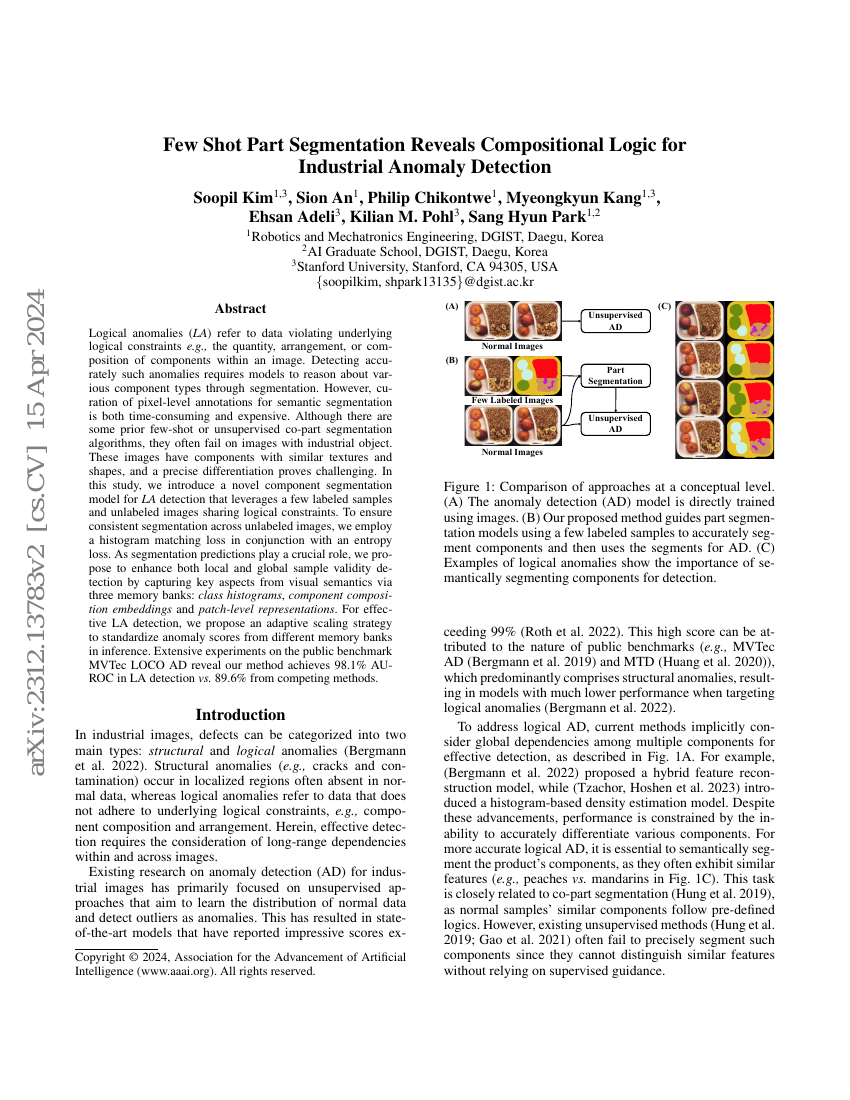Command Palette
Search for a command to run...
Few Shot Part Segmentation Reveals Compositional Logic for Industrial Anomaly Detection
Soopil Kim Sion An Philip Chikontwe Myeongkyun Kang Ehsan Adeli Kilian M. Pohl Sang Hyun Park

Abstract
Logical anomalies (LA) refer to data violating underlying logical constraints e.g., the quantity, arrangement, or composition of components within an image. Detecting accurately such anomalies requires models to reason about various component types through segmentation. However, curation of pixel-level annotations for semantic segmentation is both time-consuming and expensive. Although there are some prior few-shot or unsupervised co-part segmentation algorithms, they often fail on images with industrial object. These images have components with similar textures and shapes, and a precise differentiation proves challenging. In this study, we introduce a novel component segmentation model for LA detection that leverages a few labeled samples and unlabeled images sharing logical constraints. To ensure consistent segmentation across unlabeled images, we employ a histogram matching loss in conjunction with an entropy loss. As segmentation predictions play a crucial role, we propose to enhance both local and global sample validity detection by capturing key aspects from visual semantics via three memory banks: class histograms, component composition embeddings and patch-level representations. For effective LA detection, we propose an adaptive scaling strategy to standardize anomaly scores from different memory banks in inference. Extensive experiments on the public benchmark MVTec LOCO AD reveal our method achieves 98.1% AUROC in LA detection vs. 89.6% from competing methods.
Code Repositories
Benchmarks
| Benchmark | Methodology | Metrics |
|---|---|---|
| anomaly-detection-on-mvtec-loco-ad | PSAD | Avg. Detection AUROC: 94.9 Detection AUROC (only logical): 98.1 Detection AUROC (only structural): 91.6 |
Build AI with AI
From idea to launch — accelerate your AI development with free AI co-coding, out-of-the-box environment and best price of GPUs.